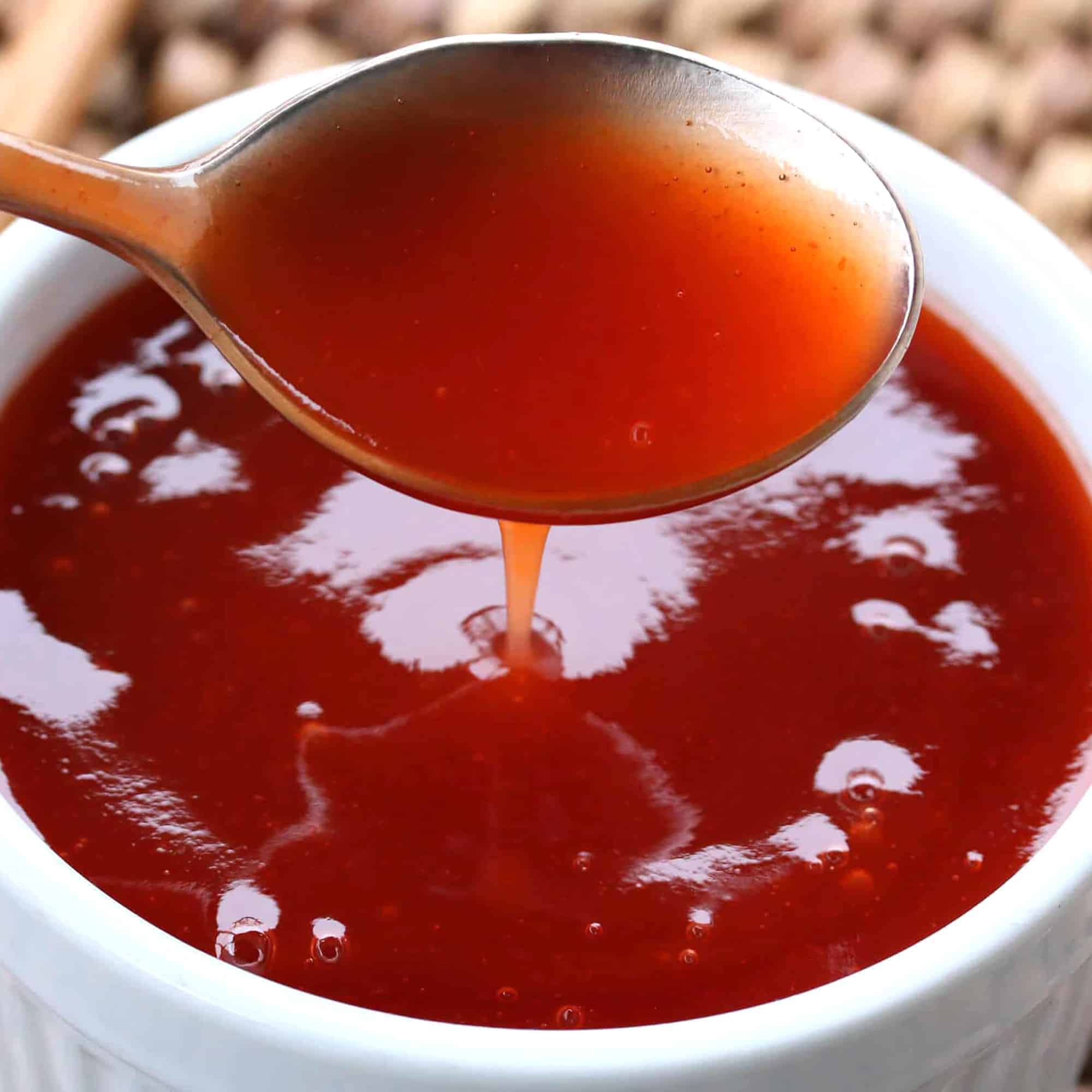Introduction:
Sweet and Sour Sauce, with its delightful marriage of contrasting flavors, has emerged as a cherished condiment in global cuisine. Originating from Chinese culinary traditions, this versatile sauce has transcended cultural boundaries to become a beloved accompaniment, dipping sauce, and integral component of various dishes. Join us on a flavorful journey as we explore the history, key ingredients, preparation methods, and diverse applications that make Sweet and Sour Sauce a delightful addition to the culinary repertoire.
History and Cultural Roots:
The roots of Sweet and Sour Sauce can be traced back to ancient China, where the balance of sweet and sour flavors was revered in traditional culinary philosophy. Initially known as “gu lou,” meaning “sugar and vinegar,” the sauce evolved over centuries, adapting to regional tastes and ingredients. As Chinese cuisine spread across the globe, Sweet and Sour Sauce underwent further transformations, integrating into diverse culinary traditions and finding its way into Western, Southeast Asian, and Caribbean kitchens.
Key Ingredients:
The magic of Sweet and Sour Sauce lies in the synergy of a few key ingredients that contribute to its distinct flavor profile:
- Vinegar:
- A fundamental element, vinegar provides the sour component in the sauce. While rice vinegar is commonly used in Chinese cuisine, variations may include white vinegar, apple cider vinegar, or a combination for a nuanced acidity.
- Sugar:
- The sweet element is typically derived from sugar, creating a delicate balance with the tartness of the vinegar. Brown sugar, white sugar, or a combination of both can be employed to achieve the desired sweetness.
- Soy Sauce:
- Adding depth and umami, soy sauce contributes a savory note to the sauce. Light or dark soy sauce can be used, influencing the color and intensity of the final product.
- Ketchup or Tomato Sauce:
- To enhance the sweetness and add a hint of tomato flavor, ketchup or tomato sauce is a common inclusion. This ingredient also imparts a vibrant red hue to the sauce.
- Pineapple Juice (Optional):
- Some variations of Sweet and Sour Sauce include pineapple juice, introducing a tropical sweetness and a touch of complexity to the flavor profile.
- Vegetables (Optional):
- Chopped bell peppers, onions, or other vegetables may be added for texture and visual appeal, creating a chunky and colorful version of the sauce.
Preparation Methods:
While recipes for Sweet and Sour Sauce may vary, a basic preparation method involves the following steps:
- Combining Ingredients:
- In a saucepan, combine vinegar, sugar, soy sauce, and ketchup (or tomato sauce). Stir to dissolve the sugar and blend the ingredients.
- Simmering:
- Bring the mixture to a gentle simmer over medium heat. This allows the flavors to meld, and the sauce to thicken slightly.
- Adjusting Consistency:
- To achieve the desired consistency, some variations of Sweet and Sour Sauce use a cornstarch slurry. Mix cornstarch with water to create a smooth paste, then add it to the sauce and simmer until thickened.
- Taste and Adjust:
- Taste the sauce and make adjustments as needed. Additional sugar, vinegar, or soy sauce can be added to achieve the desired balance of sweet and sour flavors.
- Optional Additions:
- For those who enjoy a chunkier sauce, diced vegetables or pineapple chunks can be added towards the end of the cooking process, providing a burst of freshness and texture.
Diverse Culinary Applications:
The versatility of Sweet and Sour Sauce makes it a culinary chameleon, enhancing a wide array of dishes from various cuisines. Some popular applications include:
- Sweet and Sour Chicken:
- Perhaps the most iconic use of the sauce, Sweet and Sour Chicken features crispy battered chicken coated in the luscious sauce. The sweet and tangy flavors complement the succulent chicken, creating a harmonious dish.
- Sweet and Sour Pork:
- Similar to Sweet and Sour Chicken, this dish showcases tender pieces of pork enveloped in the irresistible sauce. The contrast of textures between the crispy exterior and tender meat makes it a favorite in Chinese-American cuisine.
- Sweet and Sour Shrimp:
- Delicate shrimp, whether battered and fried or stir-fried, are elevated by the vibrant flavors of Sweet and Sour Sauce. The sauce enhances the natural sweetness of the shrimp, creating a delightful seafood dish.
- Sweet and Sour Tofu:
- Catering to vegetarian preferences, Sweet and Sour Tofu replaces meat with crispy or pan-fried tofu. The sauce’s versatility allows it to harmonize with the subtle flavors of tofu.
- Dipping Sauce:
- Sweet and Sour Sauce serves as a popular dipping sauce for appetizers like spring rolls, egg rolls, chicken wings, and potstickers. Its ability to add a burst of flavor makes it an indispensable companion for various snacks.
- Glaze for Grilled Meat:
- Brushed onto grilled meats such as chicken, pork, or even beef, Sweet and Sour Sauce transforms into a savory glaze, caramelizing over the heat and imparting a glossy finish.
Culinary Fusion and Global Adaptations:
Sweet and Sour Sauce’s journey across continents has resulted in unique adaptations, with each region infusing its own culinary flair:
- American-Chinese Cuisine:
- In the United States, Sweet and Sour Sauce has become synonymous with American-Chinese cuisine. The sauce’s slightly thickened and glossy consistency is well-suited for coating fried or battered meats, offering a perfect balance of sweet and tangy flavors.
- Southeast Asian Variations:
- In Southeast Asia, variations of Sweet and Sour Sauce may include ingredients like tamarind for an extra layer of sourness or fish sauce for a hint of umami. These adaptations showcase the region’s diverse culinary influences.
- Caribbean Twist:
- In the Caribbean, Sweet and Sour Sauce may incorporate tropical fruits like mango or passion fruit, adding a Caribbean twist to the classic Chinese-inspired condiment.
- European Infusion:
- In European kitchens, Sweet and Sour Sauce is often incorporated into fusion dishes, marrying the sweet and tangy flavors with local ingredients and culinary traditions.
Conclusion:
Sweet and Sour Sauce, born from the culinary traditions of ancient China, has evolved into a global sensation that transcends cultural boundaries. Its ability to balance sweet and sour notes, coupled with its versatility, has made it a culinary staple in kitchens around the world. From coating crispy chicken to enhancing the flavors of grilled meats, Sweet and Sour Sauce continues to captivate taste buds, proving that the harmony of contrasting flavors is a timeless and universally appreciated culinary art.




